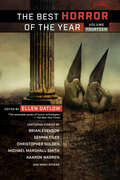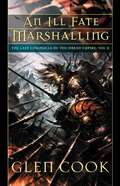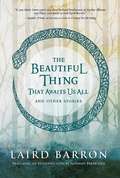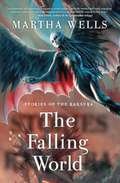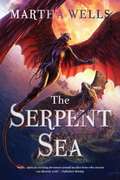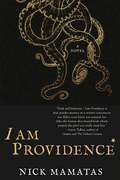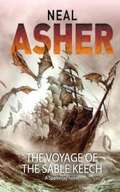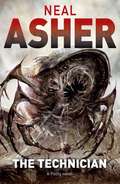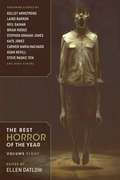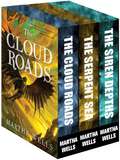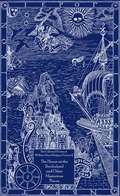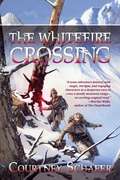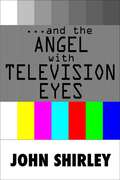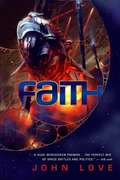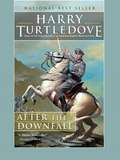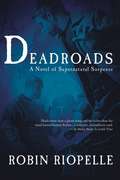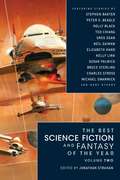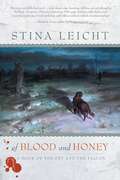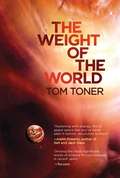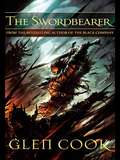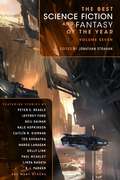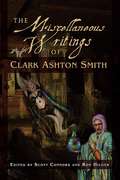- Table View
- List View
Best Horror of the Year (Best Horror of the Year)
by Ellen DatlowFrom Ellen Datlow (&“the venerable queen of horror anthologies&” (New York Times) comes a new entry in the series that has brought you stories from Stephen King and Neil Gaiman comes thrilling stories, the best horror stories available.For more than four decades, Ellen Datlow has been at the center of horror. Bringing you the most frightening and terrifying stories, Datlow always has her finger on the pulse of what horror readers crave. Now, with the thirteenth volume of the series, Datlow is back again to bring you the stories that will keep you up at night. Encompassed in the pages of The Best Horror of the Year have been such illustrious writers as: Neil Gaiman, Stephen King, Stephen Graham Jones, Joyce Carol Oates, Laird Barron, Mira Grant, and many others.With each passing year, science, technology, and the march of time shine light into the craggy corners of the universe, making the fears of an earlier generation seem quaint. But this light creates its own shadows. The Best Horror of the Year chronicles these shifting shadows. It is a catalog of terror, fear, and unpleasantness as articulated by today&’s most challenging and exciting writers.
An Ill Fate Marshalling
by Glen CookKing Bragi Ragnorson decides to join Chatelain Mist&’s coup against the Dread Empire. Varhlokkur — the King&’s wizard — tries to dissuade Ragnorson from this chosen path, but only the drum-beat of war is heard. The King&’s Spymaster Michael Trebilcock joins with the wizard to stave off The Ill Fate Marshaling, to no effect.Many of the characters from past volumes take center stage, and the climatic events of this book shake the world of the Dread Empire to its very core, creating A Path to Coldness of Heart. Glen Cook&’s final Dread Empire novel was to have been published 20 years ago, but the manuscript was stolen, and the fate of The Dread Empire has been in Limbo — until now! Night Shade is proud to present the long delayed final Dread Empire Trilogy, of which An Ill Fate Marshaling is Volume 2.
Edge of Worlds (The Books of the Raksura)
by Martha WellsAn expedition of groundlings from the Empire of Kish have traveled through the Three Worlds to the Indigo Cloud court of the Raksura, shape-shifting creatures of flight that live in large family groups. The groundlings have found a sealed ancient city at the edge of the shallow seas, near the deeps of the impassable Ocean. They believe it to be the last home of their ancestors and ask for help getting inside. But the Raksura fear it was built by their own distant ancestors, the Forerunners, and the last sealed Forerunner city they encountered was a prison for an unstoppable evil.Prior to the groundlings&’ arrival, the Indigo Cloud court had been plagued by visions of a disaster that could destroy all the courts in the Reaches. Now, the court&’s mentors believe the ancient city is connected to the foretold danger. A small group of warriors, including consort Moon, an orphan new to the colony and the Raksura&’s idea of family, and sister queen Jade, agree to go with the groundling expedition to investigate. But the predatory Fell have found the city too, and in the race to keep the danger contained, the Raksura may be the ones who inadvertently release it.The Edge of Worlds, from celebrated fantasy author Martha Wells, returns to the fascinating world of The Cloud Roads for the first book in a new series of strange lands, uncanny beings, dead cities, and ancient danger.
The Beautiful Thing That Awaits Us All
by Laird BarronOver the course of two award-winning collections and a critically acclaimed novel, The Croning, Laird Barron has arisen as one of the strongest and most original literary voices in modern horror and the dark fantastic. Melding supernatural horror with hardboiled noir, espionage, and a scientific backbone, Barron&’s stories have garnered critical acclaim and have been reprinted in numerous year&’s best anthologies and nominated for multiple awards, including the Crawford, International Horror Guild, Shirley Jackson, Theodore Sturgeon, and World Fantasy awards.Barron returns with his third collection, The Beautiful Thing That Awaits Us All. Collecting interlinking tales of sublime cosmic horror, including &“Blackwood&’s Baby,&” &“The Carrion Gods in Their Heaven,&” and &“The Men from Porlock,&” The Beautiful Thing That Awaits Us All delivers enough spine-chilling horror to satisfy even the most jaded reader.
Stories of the Raksura: The Falling World
by Martha WellsIn &“The Falling World,&” Jade, sister queen of the Indigo Cloud Court, has traveled with Chime and Balm to another Raksuran court. When she fails to return, her consort, Moon, along with Stone and a party of warriors and hunters, must track them down. Finding them turns out to be the easy part; freeing them from an ancient trap hidden in the depths of the Reaches is much more difficult.
The Serpent Sea (The Books of the Raksura)
by Martha WellsMoon, once a solitary wanderer, has become consort to Jade, sister queen of the Indigo Cloud court. Together, they travel with their people on a pair of flying ships in hopes of finding a new home for their colony. Moon finally feels like he&’s found a tribe where he belongs. But when the travelers reach the ancestral home of Indigo Cloud, shrouded within the trunk of a mountain-sized tree, they discover a blight infecting its core. Nearby they find the remains of the invaders who may be responsible, as well as evidence of a devastating theft. This discovery sends Moon and the hunters of Indigo Cloud on a quest for the heartstone of the tree — a quest that will lead them far away, across the Serpent Sea.In this followup to The Cloud Roads, Martha Wells returns with a world-spanning odyssey, a mystery that only provokes more questions — and the adventure of a lifetime.
I am Providence
by Nick MamatasFor fans of legendary pulp author H. P. Lovecraft, there is nothing bigger than the annual Providence-based convention the Summer Tentacular. Horror writer Colleen Danzig doesn&’t know what to expect when she arrives, but is unsettled to find that among the hob-knobbing between scholars and literary critics are a group of real freaks: book collectors looking for volumes bound in human skin, and true believers claiming the power to summon the Elder God Cthulhu, one of their idol&’s most horrific fictional creations, before the weekend is out.Colleen&’s trip spirals into a nightmare when her roommate for the weekend, an obnoxious novelist known as Panossian, turns up dead, his face neatly removed. What&’s more unsettling is that, in the aftermath of the murder, there is little concern among the convention goers. The Summer Tentacular continues uninterrupted, except by a few bumbling police.Everyone at the convention is a possible suspect, but only Colleen seems to show any interest in solving the murder. So she delves deep into the darkness, where occult truths have been lurking since the beginning of time. A darkness where Panossian is waiting, spending a lot of time thinking about Colleen, narrating a new Lovecraftian tale that could very well spell her doom.
The Voyage of the Sable Keech (Spatterjay)
by Neal AsherSable Keech is a walking dead man, and the only one to have been resurrected by nanochanger. Did he succeed because he was infected by the Spatterjay virus, or because he came late to resurrection in a tank of seawater? Tracing the man's last-known seaborne journey, Taylor Bloc wants to know the truth. He also wants so much else – adulation, power, control – and will go to any lengths to achieve them. An ancient hive mind, almost incomprehensible to the human race, has sent an agent to this uncertain world. Does it simply want to obtain the poison 'sprine' that is crucial to immortality – and, if so, maybe Janer must find it and stop it. Meanwhile, still faced with the ennui of immortality, Erlin has her solitude rudely interrupted by a very angry whelkus titanicus, and begins the strangest of journeys. Deep in the ocean the Spatterjay virus has wrought a terrible change that will affect them all. Something dormant for ten years is breaking free, and once again the aftershocks of an ancient war will focus on this watery world. And Sniper, for ten years the Warden of Spatterjay, finally takes delivery of his new drone shell. It's much better than his old one: powerful engines, more lethal weapons, thicker armour. He's going to need them.
The Technician (A Novel of Polity)
by Neal AsherThe Theocracy has been dead for twenty years, and the Polity rules on Masada – but it is an order that the rebels of the Tidy Squad cannot accept, and the iconic Jeremiah Tombs is top of their hitlist. Tombs, meanwhile, has escaped his sanatorium. His insanity must be cured, because the near-mythical hooder, called &‘the Technician&’, that attacked him all those years ago, did something to his mind even the AIs fail to understand. Tombs might possess information about the suicide of an entire alien race. It&’s up to the war drone Amistad to discover this information, with the help of an ex-rebel Commander, the black AI Penny Royal and the amphidapt Chanter. Meanwhile, in deep space, the mechanism the Atheter used to reduce themselves to animals stirs from slumber and begins to power-up its weapons . . .
Best Horror of the Year (Best Horror of the Year)
by Ellen DatlowFor over three decades, Ellen Datlow has been at the center of horror. Bringing you the most frightening and terrifying stories, Datlow always has her finger on the pulse of what horror readers crave. Now, with the eighth volume of the series, Datlow is back again to bring you the stories that will keep you up at night.Encompassed in the pages of The Best Horror of the Year have been such illustrious writers as:Neil GaimanKim Stanley RobinsonStephen KingLinda NagataLaird BarronMargo LanaganAnd many othersWith each passing year, science, technology, and the march of time shine light into the craggy corners of the universe, making the fears of an earlier generation seem quaint. But this light creates its own shadows. The Best Horror of the Year chronicles these shifting shadows. It is a catalog of terror, fear, and unpleasantness as articulated by today&’s most challenging and exciting writers.
The Books of the Raksura
by Martha WellsThe Complete Raksura Series, by Martha Wells. Containing Cloud Roads (2011), The Serpent Sea (2012), The Siren Depths (2013).
Wyatt in Wichita: A Historical Novel
by John ShirleyAuthor John Shirley turns his pen to the Wild West and the legendary Wyatt Earp!Wyatt in Wichita fuses historical fact with fiction, following the adventures of the young Wyatt Earp. Following the tragic loss of his first wife in the Missouri of 1870 in his early days on the dark side of the West, Wyatt eventually makes his way to Ellsworth and Wichita, where by confronting corruption he would eventually finally find his life&’s work as a tough lawman.Could Wyatt Earp have known Billy the Kid when the kid was really just that? Could Wyatt have met up with Wild Bill Hickok in Deadwood? Using the sparse trails of historical evidence available to him, the lives of the famous and infamous intersect in Shirley&’s novel, which revolves around Wyatt&’s search for the murderer of an innocent young woman of Wichita. With Bat Masterson at his side, and bawdy girls about him in the smoky light of crowded saloons, Shirley explores the possible origins of the legendary figure who would forever remain synonymous with the Wild West.Stemming from a true passion and interest in one of the Wild West&’s most indelible characters, Wyatt in Wichita is a thrilling read and an imagined glimpse into a seldom-seen side of Wyatt Earp and the untamed frontiers of early America.
The Collected Fiction of William Hope Hodgson: House on Borderland & Other Mysterious Places
by William Hope HodgsonThe second of a five volume set collecting all of Hodgson's published fiction. Each volume contains one of Hodgson's novels, along with a selection of thematically-linked short fiction.
The Whitefire Crossing (The Shattered Sigil)
by Courtney SchaferDev is a smuggler with the perfect cover. He's in high demand as a guide for the caravans that carry legitimate goods from the city of Ninavel into the country of Alathia. The route through the Whitefire Mountains is treacherous, and Dev is one of the few climbers who knows how to cross them safely. With his skill and connections, it's easy enough to slip contraband charms from Ninavel - where any magic is fair game, no matter how dark - into Alathia, where most magic is outlawed.But smuggling a few charms is one thing; smuggling a person through the warded Alathian border is near suicidal. Having made a promise to a dying friend, Dev is forced to take on a singularly dangerous cargo: Kiran. A young apprentice on the run from one of the most powerful mages in Ninavel, Kiran is desperate enough to pay a fortune to sneak into a country where discovery means certain execution - and he'll do whatever it takes to prevent Dev from finding out the terrible truth behind his getaway.Yet the young mage is not the only one harboring a deadly secret. Caught up in a web of subterfuge and dark magic, Dev and Kiran must find a way to trust each other - or face not only their own destruction, but that of the entire city of Ninavel.
…And The Angel With Television Eyes
by John Shirley"...And the Angel with Television Eyes" explores the region where fantasy meets reality. This surreal journey of self-discovery and transformation at once questions the nature of our world, and redefines it in the context of 21st century pop culture and technology. It takes a writer of John Shirley's talent and audacity to bring together elements as disparate as Shakespeare, Nietzsche, on-line role playing games, soap operas, and classic mythology - binding them together, creating a heady mélange on, above, and below the streets of Manhattan.
Faith
by John LoveMoby Dick meets Duel in John Love's debut novel of Space Opera and Military Science Fiction! Faith is the name humanity has given to the unknown, seemingly invincible alien ship that has begun to harass the newly emergent Commonwealth. 300 years earlier, the same ship destroyed the Sakhran Empire, allowing the Commonwealth to expand its sphere of influence. But now Faith has returned! The ship is as devastating as before, and its attacks leave some Commonwealth solar systems in chaos. Eventually it reaches Sakhra, now an important Commonwealth possession, and it seems like history is about to repeat itself. But this time, something is waiting: an Outsider, one of the Commonwealth's ultimate warships. Slender silver ships, full of functionality and crewed by people of unusual abilities, often sociopaths or psychopaths, Outsiders were conceived in back alleys, built and launched in secret, and commissioned without ceremony. One system away from earth, the Outsider ship Charles Manson makes a stand. Commander Foord waits with his crew of miscreants and sociopath, hoping to accomplish what no other human has been able to do — to destroy Faith!
After the Downfall
by Harry TurtledoveFrom Harry Turtledove, the master of alternate history, comes After the Downfall, a novel of magic, epic warfare, and desperate choices.1945: Russian troops have entered Berlin, and are engaged in a violent orgy of robbery, rape, and revenge. Wehrmacht officer Hasso Pemsel, a career soldier on the losing end of the greatest war in history, flees from a sniper's bullet, finding himself hurled into a mysterious, fantastic world of wizards, dragons, and unicorns. There he allies himself with the blond-haired, blue-eyed Lenelli, and Velona, their goddess in human form, offering them his knowledge of warfare and weaponry in their genocidal struggle against a race of diminutive, swarthy barbarians known as Grenye. But soon, the savagery of the Lenelli begins to eat at Hasso Pemsel's soul, causing him to question everything he has long believed about race and Reich, right and wrong, Ubermenschen and Untermenschen. Hasso Pemsel will learn the difference between following orders... and following his conscience.
Deadroads
by Robin RiopelleThe Sarrazins have always stood apart from the rest of their Bayou-born neighbors. Almost as far apart as they prefer to stand from each other. Blessed—or cursed—with the uncanny ability to see beyond the spectral plain, Aurie has raised his children, Sol, Baz, and Lutie, in the tradition of the traiteur, finding wayward spirits and using his special gift to release them along Deadroads into the afterworld. The family, however, fractured by their clashing egos, drifted apart, scattered high and low across the continent.But tragedy serves to bring them together. When Aurie, while investigating a series of ghastly (and ghostly) murders, is himself killed by a devil, Sol, EMT by day and traiteur by night, Baz, a travelling musician with a truly spiritual voice, and Lutie, combating her eerie visions with antipsychotics, are thrown headlong into a world of gory spirits, brilliant angels, and nefarious demons—small potatoes compared to reconciling their familial differences.From the Louisiana swamps to the snowfields of the north and everywhere in between, Deadroads summons you onto a mysterious trail of paranormal proportions.
The Best Science Fiction and Fantasy of the Year
by Jonathan StrahanThe depth and breadth of what science fiction and fantasy fiction is changes with every passing year. The two dozen stories chosen for this book by award-winning anthologist Jonathan Strahan carefully maps this evolution, giving readers a captivating and always-entertaining look at the very best the genre has to offer.
Blood Sisters: Vampire Stories By Women
by Nancy Holder Tanya Huff Laurell K. Hamilton Holly Black Charlaine Harris Kelley Armstrong Elizabeth Bear Carrie Vaughn Catherynne M. Valente Paula GuranA tantalizing selection of stories from some of the best female authors who&’ve helped define the modern vampire.Bram Stoker was hardly the first author—male or female—to fictionalize the folkloric vampire, but he defined the modern iconic vampire when Dracula appeared in 1897. Since then, many have reinterpreted the ever-versatile vampire over and over again—and female writers have played vital roles in proving that the vampire, as well as our perpetual fascination with it, is truly immortal. These authors have devised some of the most fascinating, popular, and entertaining of our many vampiric variations: suavely sensual . . . fascinating but fatal . . . sexy and smart . . . undead but prone to detection . . . tormented or terrifying . . . amusing or amoral . . . doomed or deadly . . . badass and beautiful . . . cutting-edge or classic . . .Blood Sisters collects a wide range of fantastical stories from New York Times bestsellers Holly Black, Nancy Holder, Catherynne M. Valente, and Carrie Vaughn, and critically acclaimed writers Chelsea Quinn Yarbro and Tanith Lee, all of whom have left their indelible and unique stamps on the vampire genre. Whether they are undeniably heroes and heroines or bloodthirsty monsters (or something in between), the undead are a lively lot. This anthology offers some of the best short fiction ever written by the &“blood sisters&” who know them best: stories you can really sink your teeth into.
Of Blood and Honey (The Fey and the Fallen)
by Stina LeichtLiam never knew who his father was. The town of Derry had always assumed that he was the bastard of a protestant — his mother never spoke of him, and Liam assumed he was dead. But when the war between the fallen and the fey began to heat up, Liam and his family are pulled into a conflict that they didn&’t know existed. A centuries old conflict between supernatural forces seems to mirror the political divisions in 1970&’s era Ireland, and Liam is thrown headlong into both conflicts! Only the direct intervention of Liam&’s real father, and a secret catholic order dedicated to fighting &“The Fallen&” can save Liam... from the mundane and supernatural forces around him, and from the darkness that lurks within him.
The Weight of the World: Volume Two of the Amaranthine Spectrum
by Tom TonerIt is the 147th century; the turning of the Amaranthine new year. In the provinces of the Old World, the giant Elatine's war of liberation has come to an impasse, leaving the wicked monarchy of the First in possession of the throne. In the Vaulted Lands of the Firmament, acolytes have risen up to execute their immortal masters. The opportunistic races of the Prism, intoxicated with greed, have arrived inside every Solar Satrapy to scavenge what&’s left. In the wild Investiture, on a forgotten water moon, a crew of shipwrecked Privateers come face to face with their greatest terror, and with it the most valuable treasure in all the galaxy. Jatropha, legendary Immortal, must escort his precious charge through the exotic Westerly Provinces, knowing all the world would steal her if they could. Sotiris, his mind fading fast, must set out to find his dear, drowned sister in a land previously unglimpsed by anyone but the dead. Lycaste, now far from home, must journey in strange company to the edge of a tempestuous sea, to the lair of someone so dangerous that even the legendary Amaranthine fear his name.
The Swordbearer
by Glen CookA young boy's dreams of glory and war turn into a bitter nightmare as his father's kingdom is overrun by an invading army. Lost and alone in the woods, he finds an ancient sword that promises him the ability to claim his vengeance. As he begins to take that vengeance, he comes to realize the price that the sword will demand of him. Enemies soon become allies and strange bedfellows abound as the prophesies of an age swirl into chaos.
The Best Science Fiction and Fantasy of the Year
by Jonathan StrahanIn print and on-line, science fiction and fantasy is thriving as never before. A multitude of astonishingly creative and gifted writers are boldly exploring the mythic past, the paranormal present, and the promises and perils of myriad alternate worlds and futures. There are almost too many new and intriguing stories published every year for any reader to be able to experience them all. So how to make sure you haven&’t missed any future classics?Award-winning editor and anthologist Jonathan Strahan has surveyed the expanding universes of modern sf and fantasy to find the brightest stars in today&’s dazzling literary firmament. From the latest masterworks by the acknowledged titans of the field to fresh visions from exciting new talents, this outstanding collection is a comprehensive showcase for the current state of the art in both science fiction and fantasy. Anyone who wants to know where the future of imaginative short fiction is going, and treat themselves to dozens of unforgettable stories, will find this year&’s edition of Best Science Fiction and Fantasy to be just what they&’re looking for!
The Miscellaneous Writings of Clark Ashton Smith
by Clark Ashton SmithThe Miscellaneous Fictions of Clark Ashton Smith gathers together the adventure, juvenilia and other non-fantastic fiction of Smith. While he is known best for his fantastic work, these adventure and mainstream stories shed light on the development of Smith&’s writing and his constantly evolving style.The Miscellaneous Fictions is a perfect companion to the five volume Collected Fantasies set. As with that set, editors Scott Connors and Ron Hilger have prepared this volume by comparing original manuscripts, various typescripts, published editions, and Smith&’s notes and letters, in order to prepare a definitive set of texts.Contents of The Miscellaneous Fictions include &“The Animated Sword,&” &“The Malay Crise,&” &“The Ghost of Mohammed Din,&” &“The Mahout,&” &“The Rajah and the Tiger,&” &“Something New,&” &“The Flirt,&” &“The Perfect Woman,&” &“A Platonic Entanglement,&” &“The Expert Lover,&” &“The Parrot,&” &“A Copy of Burns,&” &“Checkmate,&” &“The Infernal Star,&” &“The Dead will Cuckold You,&” &“House of the Monoceros,&” &“Dawn of Discord,&” and many others.
